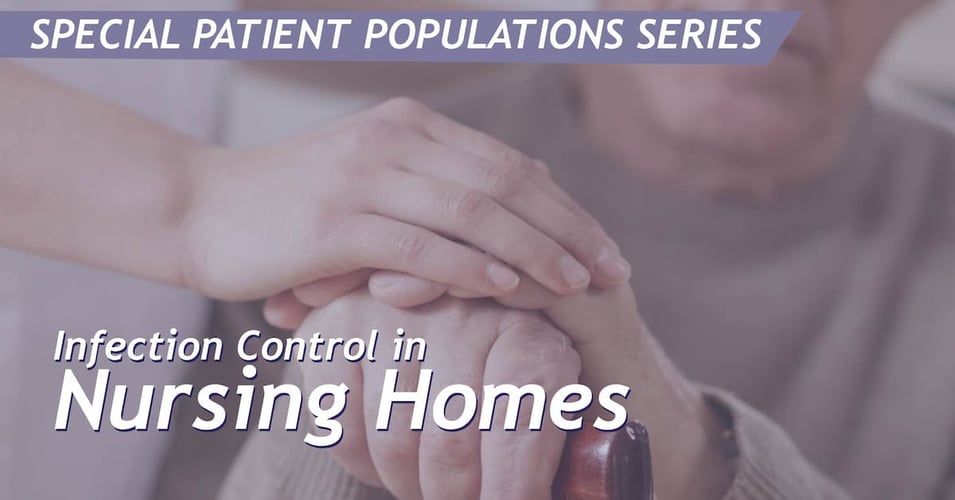We Now Return to Your Regularly Scheduled Pandemic: Hospital Associated Infections

 In a widely-circulated interview, President Biden stated that the pandemic was, in effect, over. While not an official statement and also clarified over the next few days, the idea that the worst of the pandemic is over has been echoed by global medical experts. So what now? A return to "normal" in the medical field does not mean no more infections; in fact, it means returning to a world where almost 100,000 people die each year from infections they acquired while receiving medical care - most of which are preventable. There are many similarities between a pandemic and the on-going crisis of hospital-acquired infections, and in today's post, we will explore them.
In a widely-circulated interview, President Biden stated that the pandemic was, in effect, over. While not an official statement and also clarified over the next few days, the idea that the worst of the pandemic is over has been echoed by global medical experts. So what now? A return to "normal" in the medical field does not mean no more infections; in fact, it means returning to a world where almost 100,000 people die each year from infections they acquired while receiving medical care - most of which are preventable. There are many similarities between a pandemic and the on-going crisis of hospital-acquired infections, and in today's post, we will explore them.
Over the last two years, we have all learned the definition of a pandemic. Global impact. Novel microorganisms. Rapid spread. With over 1 million dead in the United States, the highest death toll of the world, the impact of the COVID-19 pandemic will be felt for decades.
On a quieter scale, however, over the past decade, more than 1 million Americans have died of infections they acquired while in a hospital. Even as infection rates decreased, millions of infections were reported each year, leading to as many as 100,000 deaths - per year. This is a silent pandemic affecting hospitalized individuals, elderly residents of nursing homes, and other patients in long-term care.
Pandemics are global in scale, with impacts that ignore political or cultural boundaries. Hospital-acquired infections are also a global crisis. Countries with less infrastructure experience higher rates of fatalities, but even the most developed countries report tragic levels of HAI infections and deaths. The World Health Organization, in a new report from May 2022, reveals that health care infections could be reduced by 70% with better infection control programs. Globally, 1 out of 10 patients affected by an HAI will die from that infection. And yet, a significant majority of countries do not implement or have only partially implemented an infection control program.
Pandemics spread quickly, often without warning. While hospitals do occasionally have outbreaks, no healthcare facility is as vulnerable to them as long-term care facilities. Due to shared spaces and more relaxed infection control protocols, germs get picked up from contaminated surfaces and taken around the facility by residents, visitors, and healthcare workers. For this reason, SARS-CoV-2 spread through nursing homes like wildfire, leading the the greatest proportion of COVID deaths. Other pathogens travel as quickly and with similar deadly results, but because they are limited to the facility, they seldom make headlines.
Pandemics feature novel organisms that defy our current treatments. Long-term facilities and hospitals alike are vulnerable to new strains of pathogens which defy current treatments. While not novel organisms, these strains have mutated enough that they resist most, if not all, antibiotics and even some cleaners. There are 2.8 million antimicrobial-resistant infections in the US each year, with more than 35,000 deaths. Carbapanem-resistant Acinetobacter, Candida auris, and Carbapanem-resistant Enterobacterales are considered urgent threats, a dozen other pathogens are considered serious or concerning threats. When these pathogens spread through a healthcare facility, it is just as scary as when SARS-CoV-2 was spreading and there was no treatment or vaccine yet.
Pandemics mean global attention and action... Infections from novel pathogens that spread quickly and globally get a lot of new coverage and policy action - as they should. Governments, manufacturers, and health agencies work together to slow the spread and discover treatments and vaccines. HAIs, while affecting only a subset of the global population (hospitalized individuals), would benefit from the same degree of attention and action. Unfortunately, many people still think HAIs are an inevitable risk when receiving medical care. They do not know that these infections are preventable, if facilities take the steps to eradicate them. Just as during the SARS-CoV-2 pandemic, HAIs need experts to speak up, often and through many media outlets, to put pressure on facilities to adopt a mentality that HAI rates can and must be reduced.
...Except when they don't. It is no secret that not everyone reacted to the news of a growing pandemic with the same degree of urgency. During the first months, this skepticism was understandable as data was incomplete and we still had so many questions. But even as the pandemic spread and death tolls rose, there continued to be the need for education, explanation, and even personal exposure for many to believe COVID was a real threat. In many ways, the same applies to HAIs. The assumption that getting an infection in a hospital is so ingrained in our thinking that, as healthy individuals walking through a hospital, we might even joke "don't touch anything!" or make sure our coats or bags don't touch the floor or another surface. Deep down, we know hospital surfaces are contaminated. Now we have to take that knowledge and take action.
Many of us share a sense of despair when considering what we can do to reduce the number of infections that vulnerable patients acquire simply by being in a healthcare facility. It seems too big a monster to have any hope of vanquishing. However, there are steps we can take that can make a difference. Of course, hand hygiene is paramount. Contaminated surfaces don't often move around a hospital, but we sure do. Effective cleaning protocols also play a central role. But what about between handwashing opportunities, or between cleaning visits? To maintain a continuously low level of contamination of the environment - of bioburden - we need surfaces to employ self-sanitizing properties that kill pathogens before they can be picked up and transmitted to a vulnerable patient. Only copper and copper-infused preventive biocidal surfaces can provide this continuous reduction in bioburden by actively killing >99.9% of bacteria, even after recontamination. By advocating for biocidal materials and other infection control interventions, we can play a vital role in reducing hospital-acquired infections, the silent pandemic.
![EOScu Logo - Dark - Outlined [07182023]-01](https://blog.eoscu.com/hubfs/Eoscu_June2024/Images/EOScu%20Logo%20-%20Dark%20-%20Outlined%20%5B07182023%5D-01.svg)




